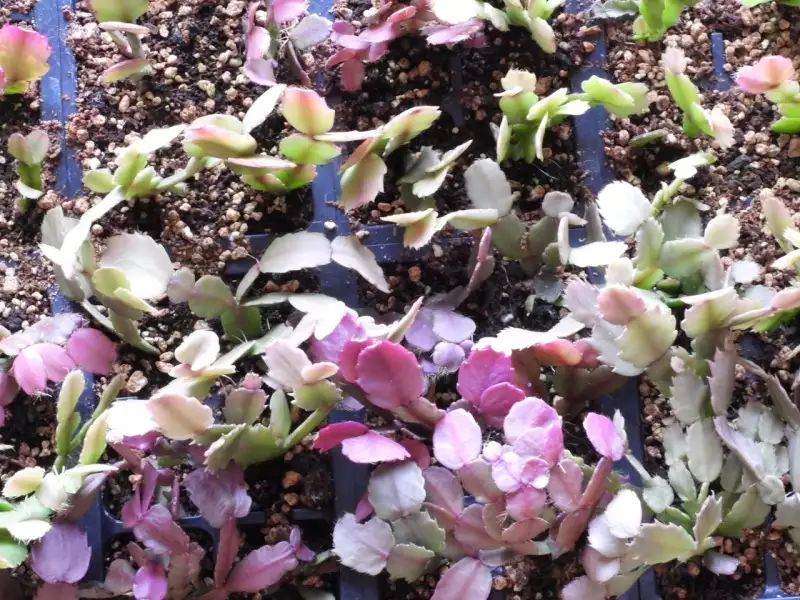
|

|
xmas cactus seedlings 1/20/22
I got the urge to try growing xmas cacti from seeds some years ago. Seeds were not available, so I reasoned that If I bought two or more colors of plants at xmas, I should be able to make seeds. Not that simple. It happens that the plants are not too terribly eager to make seeds. It took five plants before I got enough biological willingness to make some seeds. My guess is that less than 1% of crossings were successful. It might have been much less. Some plants made one or no fruit. A good set was 3 to 5. Having finally made seeds, I had trouble germinating them and keeping the little plants alive. Some of this might be due to the freakish nature of today's commercial xmas cacti. They have been absolutely cloned for maybe 100 years, and maybe more than that. On top of that, they were also selected to be so controllable by the growers that they could be reliably delivered to the markets with buds almost opening during Thanksgiving week, so that blooming starts right after Thanksgiving and continues to Xmas. I gave up. Then, last year, I reconsidered the problem. I decided to try it all again, the same way as before, but using a 50/50 mix of coconut coir (the fibrous wrapping of a coconut) and perlite as a seed medium. The picture shows the results after about 10 months. I have 144 seedlings in two trays of 72 cells.
You're all probably wondering (and if not, you should be) why the pink and why the pale green. Xmas cacti like so many epiphytes live under a jungle tree canopy. They don't get much, if any, direct sunlight. A plant which gets more light than it wants (or needs) tends to not make as much chlorophyll. That is, the green color diminishes. When this happens, the other colors, normally swamped by the green color, come out. In the case of cacti, this is some form of reddish purple coloration. So what you may think are sick plants in the picture are actually doing ok, with a touch more light than is optimal. (I love my 4-foot LED lights.) If you've ever seen the turning of the leaves of broadleaf trees in the fall, it's a similar story. Triggered by day length, the leaves totally stop making green. Many other colors, present since the leaves formed in spring, then come out to color the leaves. (25/32)